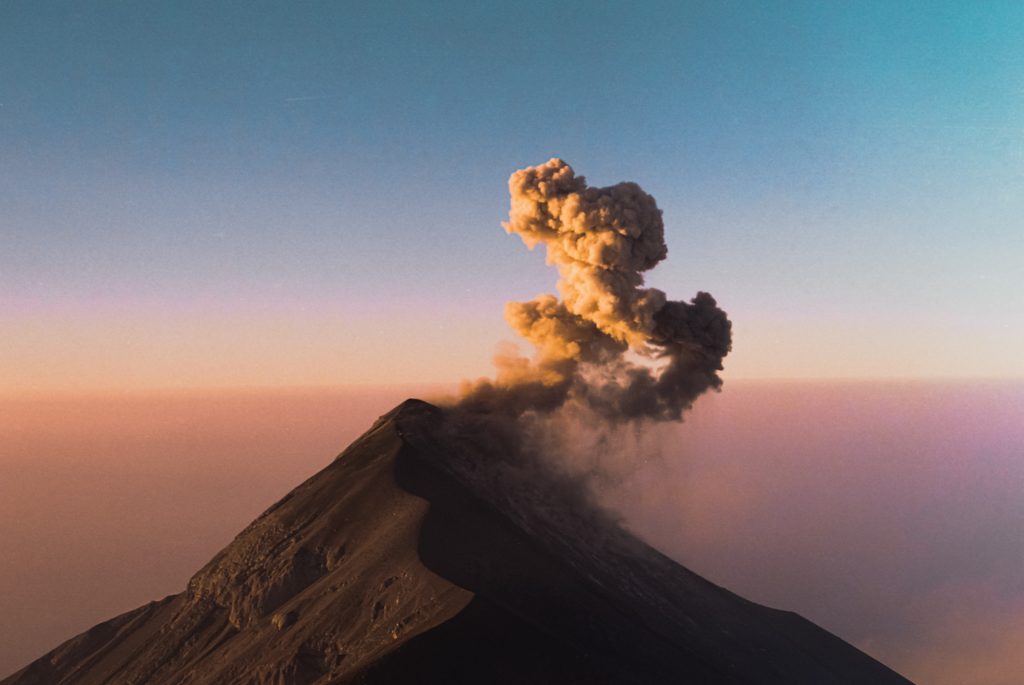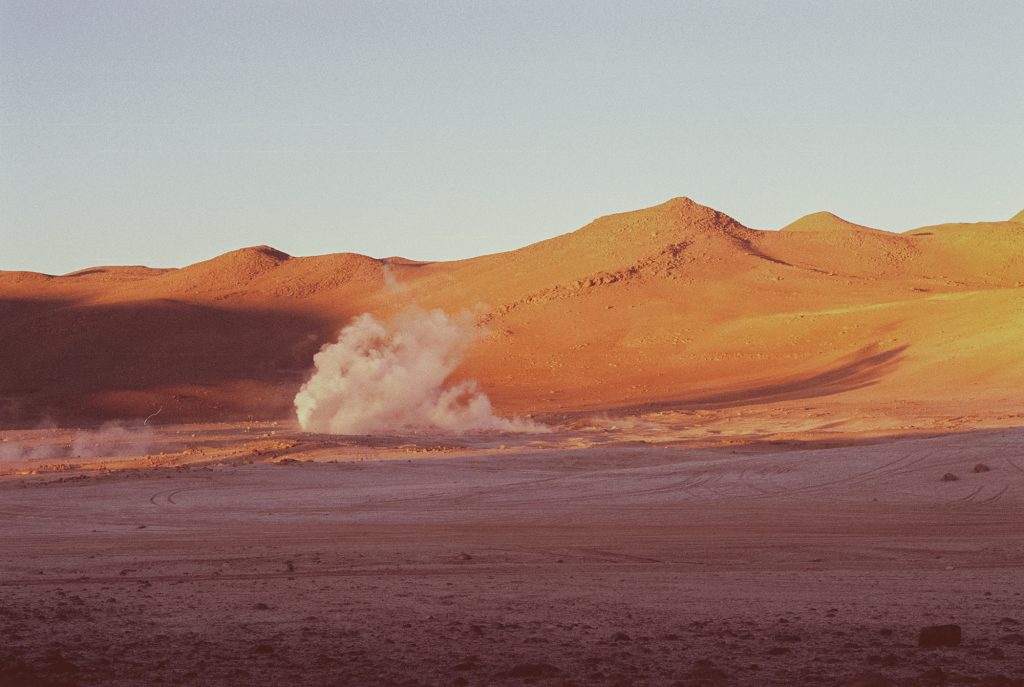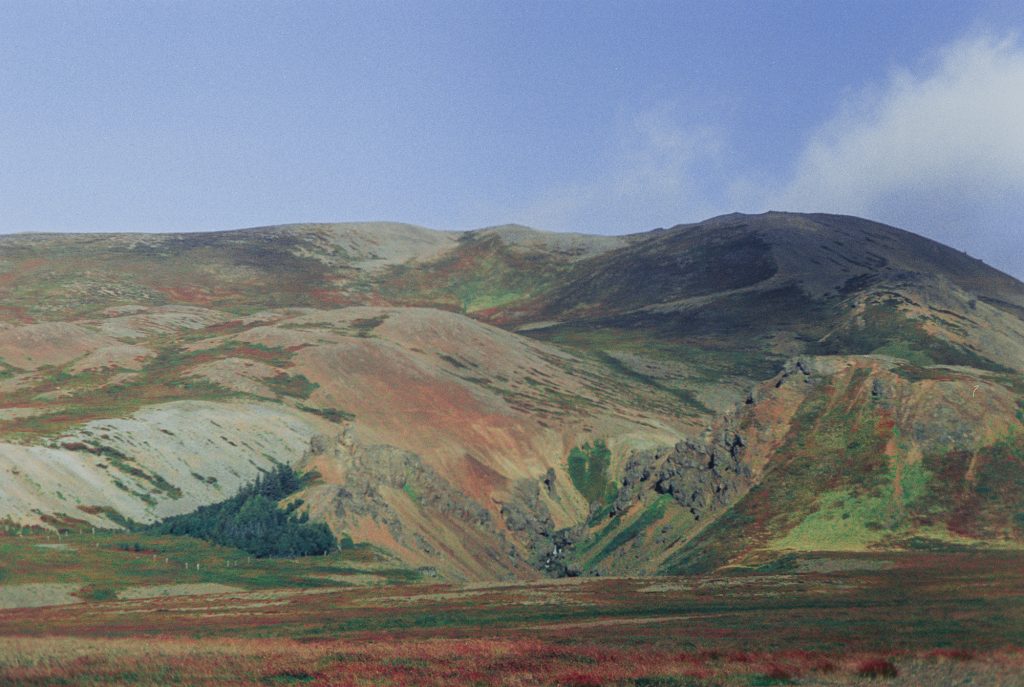A conversation on the future of the Earth
Published in Nuda:Terra
Nuda dives into the world of sustainability to discuss the shifting boundaries of the global economy and call for urgent action in response to climate change. From the need to reconnect with the living biosphere to the challenges presented by sustainable development, Johan Rockström and Vandana Shiva retrace their scientific successes to tackle the ongoing environmental crisis and predict its socio-economic aftermath. With a PhD from Stockholm University’s Systems Ecology Department, professor Rockström holds a specialisation in water resources and sustainability. The creator of the planetary boundaries framework — a list of factors to be considered in preservation of a “safe operating space for humanity” — Rockström boasts years of experience in building resilience in water scarce regions. Having starred alongside Leonardo DiCaprio in Before the Flood, a documentary on the disastrous consequences of climate change, Rockström makes use of popular media to share his knowledge with the wider public. In fact, the professor has also led two TED talks — How we can all become responsible stewards of Planet Earth (2013) and Let the environment guide our development (2010) — and reached 39,000 shares in what has become one of the most-listened-to Swedish radio talks on the Sommar i P1 programme. As the author of over 170 research articles, Rockström has won a number of prestigious awards, including the International Cosmos Prize (2015) and the German Environmental Award (2015).
As an environmental activist, food sovereignty advocate, and anti-globalization author, Dr. Vandana Shiva strives to protect and increase biodiversity in agriculture. Among the others, her goal is to improve levels of local productivity, nutrition, and farmer incomes in Delhi as well as across the globe. Described as “the world’s most powerful opponent of Monsanto,” the Indian professor is a revolutionary the planet desperately needs today. Playing a pioneering role within the field of sustainability, Shiva is the founder of the Research Foundation for Science, Technology, and Natural Resource Policy (RFSTN), an organisation that focuses on the creation of sustainable solutions for agriculture. She is mostly known for her criticism of Asia’s Green Revolution, where she condemned the heightened use of pesticides and fertilizers as a way of increasing food production in less-developed countries. Doctor Shiva is also the recipient of the Right Livelihood Award (1993), considered by many as an “Alternative Nobel Prize”.
Drawing from the findings of decades of research and field study, these two scholars rely on concepts such as the “interconnectedness of living systems” and the “Anthropocene” to raise awareness of the rights and duties of humans in a rapidly changing planet. The result is a talk that — merging Western and Eastern perspectives on global warming — reflects upon the flaws of today’s agriculture and food production systems to prevent further damage and preserve the precarious balance of an already compromised Earth.

Dr. Shiva, I am really excited to hear you conversing with Dr. Rockström. I know there are points you both agree upon but you also have some contrasting opinions, which makes this interview particularly interesting.
Dr. Shiva: I wouldn’t necessarily say that me and Rockström have different views. I just think that Western people have such a narrow experience of what the world is like and what sort of cultures are out there that there’s an extrapolation backwards. Everyone plays a role in this; everyone has a stake in this situation. We’ve all destroyed the environment. We took advantage of and relied greatly on extraction in order to accumulate the resources needed to carry on with our life: hence, there’s been a globalisation of the Western industrial consumer society, which is sold to us as if that’s the only way in which humans can live. But, again, I don’t think Rockström and I have different opinions, we’ve just had different experiences. Even your little Greta has that limitation. Right now, I am worried about everyone not doing fine. There are loads of people who are suffering. What’s interesting is that everyone has reacted differently to the lockdown. I was so glad to look at what was going on in Sweden and see that there was at least one country making its own decisions where everyone was walking like in a military force, you know?
Dr. Rockström: That’s right. Then the question is, of course, whether we walked in the right direction, but that’s still a very good point.
What are the biggest threats that our planet, society, and humanity as a whole are facing right now?
Dr. Shiva: Well, I come from a part of the world where it’s so clear and direct to realise that when violence is done to nature, violence is also perpetrated onto people who have been pushed to the margins. It could be women, it could be tribes and indigenous people, it could be peasants. So, from my perspective in India, sustainability and justice are not separate silos – they are interconnected: this Earth supports everyone and not just humans. When one bunch of humans allocate themselves the power and arrogance to draw material gifted by the earth for themselves, and they define – or better – redefine a living earth, it’s problematic. That’s why I worked so long on recognising that that’s where the problem begins.
How did we come to define this living earth as dead matter? And why did we give birth to the masculine idea of separation from the earth? In fact, it is exactly this mechanical view of a dead earth that gives the right to appropriate resources that don’t belong to you. These are the commons local communities have taken care of over centuries. My first movement was the Chipko movement. The movement started out in a place where forests were being extracted and there were women claiming ownership over the trees. In Chipko, the issue of the rights of the forests and the rights of women who depended on the forest were the same rights, they were not separate.
The lockdown itself is going to leave half of humanity redundant. That’s what’s happening in my country, but it’s a global concern: we are moving towards an economy that requires greater resource extraction and a smaller human capital, which means that fewer and fewer people will be needed to run the capitalistic system. That leads to poverty, hunger, unemployment, and none of these phenomena can be understood separately. All of them are routed back into a paradigm that assumes that nature is dead. It sees humans as superior to other species. This allows people to believe that the Earth’s resources can be extracted, violating local ecological limits and, of course, violating the planetary boundaries, which have been the subject of Dr. Rockström’s amazing work and research.

Dr. Rockström: Let me start by just emphasising how much I agree with you here Vandana, and I’ll give a few reflections that actually reinforce your point even further about the absolute urgency. If we really want to have any chances of handing over a manageable, livable planet to the next generations, we need to be connected with the living biosphere. I totally agree with your point about justice and how much natural science today supports the need to share the remaining safe space on Earth in a fair way. To answer your question, I really want to start with the idea that 2020 was proclaimed by science as the “super year”. 2020 is the super year in the sense that you cannot find any climate science or biodiversity scenario that doesn’t bend the global curves like 2020. Even if we go down to 50% outcome, avoiding ever irreversible disastrous changes, we have to bend the curves no later than this year. Why? Well, it’s simply because the pace of exponential reduction of pressure on the planet has to occur right now. We can’t wait any longer, we all need to take action.
As you know, even the Intergovernmental Panel on Climate Change (IPCC), the floor we stand on scientifically, can be criticized on one issue; that it has been underestimating the pace of change. The IPCC is in charge of gathering the scientific evidence necessary to show us why we need to cut emissions by half every decade. Now, if you cut emissions by half between 2020 and 2030, this would imply reducing the overall quantity of such emissions by 7% per year. If you then look at COVID-19, the global lockdown, and the disaster of the pandemic; consider the impact this is having on jobs, on poor urban dwellers, on economies around the world, it will translate to 70% of emissions this year. This shows us that the scale of the change we need to accomplish is a kind of a COVID-19 equivalent every year from now onwards.
Now is it a good thing that COVID-19 has contributed to reducing emissions? Of course not. It’s the last path to a sustainable future. We don’t want to knock down livelihoods to save the planet. We need a transition to show that we can have an equitable, sustainable, healthy, and secure future in harmony with the planet. The interesting thing is that we already now have a solution for that. My key addition to Vandana’s really eloquent entry point here is that we’re running out of time. This is a planetary emergency point. It’s not only about fixing the biophysics, it’s not just about reconnecting to the biosphere. It’s not only about equity and justice, it’s also about urgency. If we continue as we do today on exploiting the living nature, we will come to a point where we can no longer trust our ability to produce enough food.
When we talk about climate change we talk about a massive urgency. We all need to recognise that now is the time to fundamentally step up. And let me just close by saying that just because COVID hit us and everyone was called to press the pause button that doesn’t mean we’re safe now. The planet doesn’t care whether we’re in 2020 or in 2021. You could argue that COVID gave us a little bit of breathing space to be able to, you know, step up our game in 2021. We still have a decade ahead.
Dr. Shiva: Over the last three and a half decades, my work has shown that the imperative to avoid catastrophe reflects the necessity to come up with certain farming techniques that preserve the Earth, which is the deeply-rooted, original meaning of agriculture. This kind of farming pulls down and pulls back emissions. It creates resilience in plants, giving birth to something that doesn’t exist in science. We shouldn’t care about climate because of panic; instead, we should do the right thing because that is what being human on this planet means, being part of the Earth.
My PhD was on the non-separability in quantum theory, claiming that everything is connected down to the quantum. In living systems, there’s even more intimacy. We are part of living systems and that’s why we should not be outside looking for magic bullets. My work originates from the living, the soil, the biodiversity, and the plants. The more biodiverse our farms are, the more biodiverse our forests and pastures will be. They don’t just recycling carbon more efficiently, they also create resilience for communities on the ground.
I tend to differentiate between dead carbon – put underground by nature about 600 million years ago – and living carbon, which we must grow and protect through photosynthesis and other miraculous phenomena of life. Thanks to those, we have the ability to turn carbon dioxide into oxygen and to transform carbon into living soil.
Dr. Rockström: I like your way of defining it as living and dead carbon. I normally use a different, academic definition. Black carbon is dead carbon, whereas green carbon is living carbon. People don’t recognise that these two must be fundamentally separate. You cannot replace black carbon by planting trees that give you green living carbon. The goal would be to work at both levels: first, you need to get rid of the black carbon. Once you have done so, you can start incrementing the presence of green carbon. Large amounts of green carbon have been lost over the past decades, obviously affecting the biosphere.
Now comes the dramatic part. As you already know, we’ve transformed 50% of the terrestrial ecosystems on Earth for agriculture, transport infrastructure, and cities. The only reason why we haven’t lost the game already is that the remaining 50% is so resilient, that it’s providing an extraordinary subsidised support for humanity as a whole. The surviving ecosystems are sequestering 25% of the carbon and providing all the ecological functions and services that you know so well about: pollination, clean air, water flows. Right now, all of that must be sustainable because we’ve pushed it so far that we are at the edge, we cannot lose any more of those natural functions.
Dr. Shiva: Absolutely. Protecting the ecosystems whose integrity has not yet been violated is incredibly important. But again, there’s always going to be that colonial separation that assumes that a forest is intact only when it’s free from people. Yet, my work on forestry showed that the richest forests are those managed by communities employing very conscious techniques, such as rotational grazing and rotational harvesting. Contrary to expectations and misbeliefs, there can be nature in full integrity and resilience even with people around. It’s full of communities who actually have the knowledge necessary to take care of the planet. The Amazon has never been an empty forest, it has indigenous communities being displaced and whose displacement is at the root of the pandemic.
Dr. Rockström: The conversation around climate change is shifting very rapidly, as climate change has begun to hit each one of us. It is now becoming uncomfortable to experience, it creates fear, and has an impact on both the rich and poor realities of the world. Looking at the trends over the past five years, it’s quite extraordinary to witness the incidence of phenomena such as forest fires, heatwaves, disease patterns, and other extreme events in places like Canada, Norway, Sweden, Finland, Russia, and Australia. This is heartbreaking in general; however, paradoxically, it carries an important message: we are all in this together. This is also a key element of the coronavirus crisis. We know it’s a big world out there, still, we live on a very small planet and we should be aware of the fact that we’re totally interconnected.
It’s time to fundamentally recognise that we’re victims of our own unsustainable journey. Let’s talk about this as an environmental change hitting all of us. We’re all sitting in the same boat and the boat is leaking. It doesn’t matter if you’re from the North or the South, from the East or the West, we all need to step up on action and we must do it now.
For the first time in human history we must truly consider the risk of destabilising the whole planet. We put so much pressure on the planet, both in terms of climate but also in terms of the living and the nonliving systems. Such pressure has brought us to this current point, and it’s well established we are on the edge of entering a new geological epoch known as the Anthropocene. The fact that humans are now the largest pressure of planetary change means that we can push it across all tipping points. This can irreversibly take the Earth away from its state since leaving the last ice age 12,000 years ago: shifting away from the state that enabled civilizations to develop and the world as we know it to be established.
That is the exact reason why we need planetary boundaries, or targets, that are scientifically based to provide us with a safe operating space. Those boundaries are needed in order to survive within a quantitative, safe parameter and to be able to maintain a livable state supporting human development. Not doing so would trigger irreversible changes that will amplify forever. This would not happen overnight, but it is something we need to be aware of.
The planetary boundaries are a guiding set of science-based targets that give us a sort of guardrail for our developmental future. We have destroyed or undermined very significant portions of the living and nonliving environmental components of our system. We are now at this hockey stick, exponential pressure point on Earth. Still, the planet has been and continues to be so resilient that, despite all these pressures, we’ve not yet pushed the planet into a completely new state. We’re still in a Holocene interglacial biophysical state, which we have been in since we left the last ice age.
I would argue that the biggest challenge for humanity is to stay within the planetary boundaries, so as to prevent the Anthropocene from becoming an actual state. Should this turn into a new state, the entire planet would be characterised by a hothouse state which would threaten the whole planet. The Earth would change colour, we would get up to a seven-meter sea level rise, as well as permafrost thawing, which bumps up the temperature even further. This could lead to even more forest fires, bumping up more greenhouse gases. That’s what would happen if we move too far outside, of the planetary boundaries.

What is our current situation with regard to the planetary boundaries? What can be done to try to prevent irreversible change?
Dr. Shiva: How ever we twist and turn, we have to keep all the boundaries in the green to have a good chance of keeping that resilience of the system intact. So far, we are in what I call “a danger point,” as we’ve transgressed four of the nine boundaries. Two of them risk triggering nonlinear changes. This does not mean that the whole planet tips over, but it’s starting to show signs of irreversible change.
Looking at what’s happening, it is very likely that we have already crossed the tipping point in West Antarctica, which is pretty dramatic. In fact, there are a number of glaciers that are irreversibly sliding into the Southern Ocean. The Gulf Stream is slowing down and we’re seeing a larger impact on events that used to be linear. We’re also witnessing changing regional weather patterns due to an alteration in ocean circulation. We know that the Arctic Sea Ice has crossed the tipping point and that we are very rapidly losing summer sea ice in the Arctic. The same is about to occur in Greenland. Not that it would melt overnight, but that would mean entering a phase that is unstoppable. Greenland holds seven meters of additional global sea-level rise, it might take a thousand years, or 500 years, or 400 years for that to melt. But from my perspective, that doesn’t make a difference whatsoever.
Note from the editor: About a week after Dr. Shiva and Dr. Rockström took part in this talk, Greenland’s melting ice sheet was declared to have “passed the point of no return.” According to a study published in the journal Nature, the quantity of ice now melting into the ocean would be far larger than the amount of snow assembling on the ice surface. Should Greenland’s ice sheet melt completely, sea levels would increase by 7 meters by the year 3000.
As human beings, we have a moral responsibility towards generations to come, be it a hundred years, 200 years, or 500 years. I mean, 500 years into the future is not very far, especially if you think that our religious beliefs and much of our documented, written history dates back 2000 years. We like learning about Julius Caesar and the rise of big religions in school. Well, that is more than a thousand years ago. So 500 years into the future is nothing. Of course, we are responsible for leaving a livable planet, not only for the next 20 years but also for the next 200 years. And that’s what the planetary boundaries provide us with.

I am really interested in asking you both about sustainable development. Is it even possible, or is it just a utopia? Many allude degrowth as the only possible solution, but there are also people who believe that sustainable development could serve as a good strategy to bring about a more conscious economic growth. Do you believe sustainable development to be compatible with the idea of a healthy planet?
Dr. Rockström: Well, let’s begin with the definition of sustainability. Let’s say we define it as taking care of the environment so that we don’t prevent future generations from having the same possibilities of the current one. What I would add to this definition is that sustainable development today is about human wellbeing and equity within a stable and resilient planet. The definition of sustainable development needs to go all the way up to the planetary scale. Taking care of your local community is not enough anymore.
Is sustainable development possible at all? It’s not only possible, it’s absolutely necessary. Unless we transition towards a sustainable future – meaning circular economic business models, closing the whole carbon budget by decarbonising, halting the loss of biodiversity in all sectors – we won’t be able to have even the minimum level of human wellbeing for 10 billion people on the planet. Either we go sustainable and give a moral chance to everyone, or we continue with the unsustainable way, and just deepen inequities in the world. In this way, we will continue having unsustainable wealth for a few and nothing for the poor majorities, which will lead to more extreme consequences.
To answer your other question, which is a more controversial one. Can economic growth and economic development be matched with a sustainable transition? My position here is that I am agnostic to growth. To be honest, I don’t care about economic growth whatsoever. I think it’s a misnomer. It is the wrong dialogue to have, it’s the wrong focus. Our objective is not economic growth. Our objective is human wellbeing on a stable planet, period. Empirical evidence shows that there isn’t a single answer to this question. Yet, one thing is unequivocally clear; our conventional GDP-based unsustainable growth model does not take us where we want to go, it does not take us to a sustainable future.
Our current economic model is failing us, but does that mean that economic growth is negative? Well, not necessarily, because you could think of a renewable, energy-based, solar-driven, decarbonised economy, which is circular, service-based, share-based, digital, and could even be fair and capable of avoiding loss of living nature while still developing GDP growth. Theoretically speaking, there’s nothing hindering that from occurring. Is there any evidence that we’ve succeeded in that? The answer is, unfortunately, no.
Many people love to talk about “green growth”, it’s attractive, and I theoretically support it. Green growth basically means that we have economic development that decouples the negative planetary impact caused by current forms of economic growth. In some segments of society, this has done well, but it has never succeeded in totality. Swedes love to claim that we’ve been able to decouple Swedish economic growth from impacts on the climate. However, that is just partly true, as we have done it domestically. We’ve done it by having very efficient industrial processes, a revolutionary energy system, and we have been quite good at reducing emissions. However, per-capita emissions are increasing, because we’re so dependent on consumer goods from a globalised market. We just and we just continue consuming. So, decoupling in the true sense has not really happened yet, but it can.
Finally, it is important to say that developing countries still need growth. Being in the midst of their economic development, the poorest economies in the world, and the lifestyles of their citizens, benefit significantly from the tiniest GDP increase. This provides them with better schools and health systems. It grants them improved security rates and transportation infrastructure, thus turning their cities into more enjoyable places. We could differentiate between two types of countries: those that have reached, or are about to reach, a point where people can live without necessarily depending on growth, and those that must continue with periodical growth in order to found a minimum wellbeing.
Your question requires a lot of careful social consideration towards different regions and cultures of the world. My not so satisfactory answer to you is proof of how complex this question is. There’s so much debate on this because there is no black or white answer, you cannot say growth or degrowth. I do not see any contradiction between economic development and staying within planetary boundaries.
The question is, what kind of economic development are we talking about? If you have development that internalises all the externalities, is fully circular, and stays within science-based targets or planetary boundaries, one could think of economic development continuing to a certain extent. Of course, it would be a different kind of development. The current development, just like Vandana pointed out, looks at raw materials as dead and free. They are simply there. We can exploit upstream, add value in GDP, and create waste downstream. That’s the linear model we have produced.
This means that GDP growth is subsidised by the planet, and no economist likes subsidies. But they would never admit that, in fact, we actually are subsidising our economy. If we had to put the right price on the atmosphere, on nitrogen, on phosphorus, on deforestation, then of course, GDP growth would look very different. So, currently, it’s just a cowboy economy. We’re just grabbing here, making profit, wasting there, and this is what makes the current model questionable.
Shiva, is the idea of sustainable development utopian?
Dr. Shiva: Sustainable Development has become an obsolete concept, especially if we consider the current international crisis, characterised by multiple climate-related emergencies, species extinction, pandemics, hunger, and inequality. Development as a biological term of “self-organised change from within” has lost its meaning when this was imported into the economic discourse. The issue of sustainability is now all about sustaining life and avoiding extinction. Preserving the conditions of our lives is a survival imperative. Avoiding extinction is not a utopia, but an ecological and an ethical obligation.
To what extent is expansionism compatible with sustainability? Do you believe that we can reach our goals for a healthy planet within the current system?
Dr. Shiva: Expansionism has its roots in colonialism, and it is responsible for the violence exerted upon the Earth as well as those who are colonised. This is something that should not and cannot be justified. It cannot contribute to the preservation of a healthy planet. This paradigm implies living beyond your share and taking what belongs to other species, cultures, or human beings. It’s all about war and conquest over nature, which becomes clear when looking at how dependent today’s economic system is on extractivism. This is exactly what brought the planet and humanity as a whole to the brink. The billionaires want to expand their empires to Mars, yet, only the Earth is Gaia and has created the exact conditions for life, including human life, to evolve. Humanity now has to face the consequences of the ongoing climate crisis, the disappearance species’, water scarcity, and desertification. We are also witnessing an increasing polarisation of economic society, where 1% of the global population is in possession of the most resources. Just because it is the dominant system does not mean it is fair, universal, or permanent. Over the course of history, different civilizations managed life and economic affairs through differing systems. Even today, mechanistic and reductionist science is giving way to holistic science. Extractive economies are giving way to circular economies. Finally, separation is giving way to oneness. Contrary to expansionism, sustainability sees people living within ecological limitations and respecting the lives of others. That’s why these two concepts will never be compatible.

Is a viable solution to global warming compatible with consumer capitalism?
Dr. Shiva: No. Climate change and global warming represent a rupture in the Earth’s cycles and Gaia’s self-organising capacity to manage her climate. This rupture corresponds to the breaking of ecological limits and planetary boundaries. In fact, changing the source of energy while increasing consumption of materials still violates the environment. The only way to find solutions to this emergency is to create living economies. We must recognise that we are members of the Earth’s family. We need to give up the misconception that humans are superior to other species, and that some are superior to other humans. Capitalism equals colonialism: either powerful men stop colonising nature, cultures, workers, farmers, women, and future generations, so that we can unleash our diverse imaginations, creating Earth’s Democracy, or the future will close for our species.
What is your opinion on the idea of de-growth, back to local?
Dr. Shiva: Growth, just like development, is a biological term. Children grow, plants grow… But within the economic discourse, ‘growth’ was first introduced during the war, extracting social wealth for buying weapons and financing armies; then it became the sacred GDP number, which is nothing but a measure for extractivism. Limitless growth on a planet with limits is a very violent and destructive illusion that has largely been questioned by Nobel laureates. Bhutan gave up GDP and GNP for GNH (Gross National Happiness). My goal is to create local living economies that respect and regenerate the Earth while fulfilling the needs of all.
What do we foresee if we don’t do anything today? What do 200 years into the Anthropocene look like? If we really pass all the tipping points, what world are we looking at then? Because I think that’s something people may speak about, but not in clear terms. We are always saying that we have to do something, but we don’t know what will actually happen if we don’t do anything.
Dr. Rockström: Where would we be if we just continued today? Where would we be in 200 years’ time? We would certainly be on a planet that is for at least four degrees Celsius warmer than today. So, it wouldn’t be a change that goes unnoticed. We would wind back the climate clock, 5 to 10 years, and would have reached what we call a hothouse Earth. It’s basically the planet that hosted the dinosaurs. It’s a hot world with essentially no ice caps and sea levels that are perhaps not more than six to eight meters higher than today. We would be continuing along the trajectory that would ultimately take us to more than a 20-meter rise in sea level.
From today, two years down the line, we will see increasing extreme events like droughts and floods, have massive disease outbreaks, since ecosystems cannot keep up the pace with such rapid changes. We could have heat waves making it impossible for everyone on earth to live in decent conditions. For every two degree Celsius increase, 1 billion people would be living in places that would not allow them to cope physiologically, because of overheating.
| Words | Gilda Bruno |
| Interview | Nora Hagdahl |
| Photography | Olof Grind |

